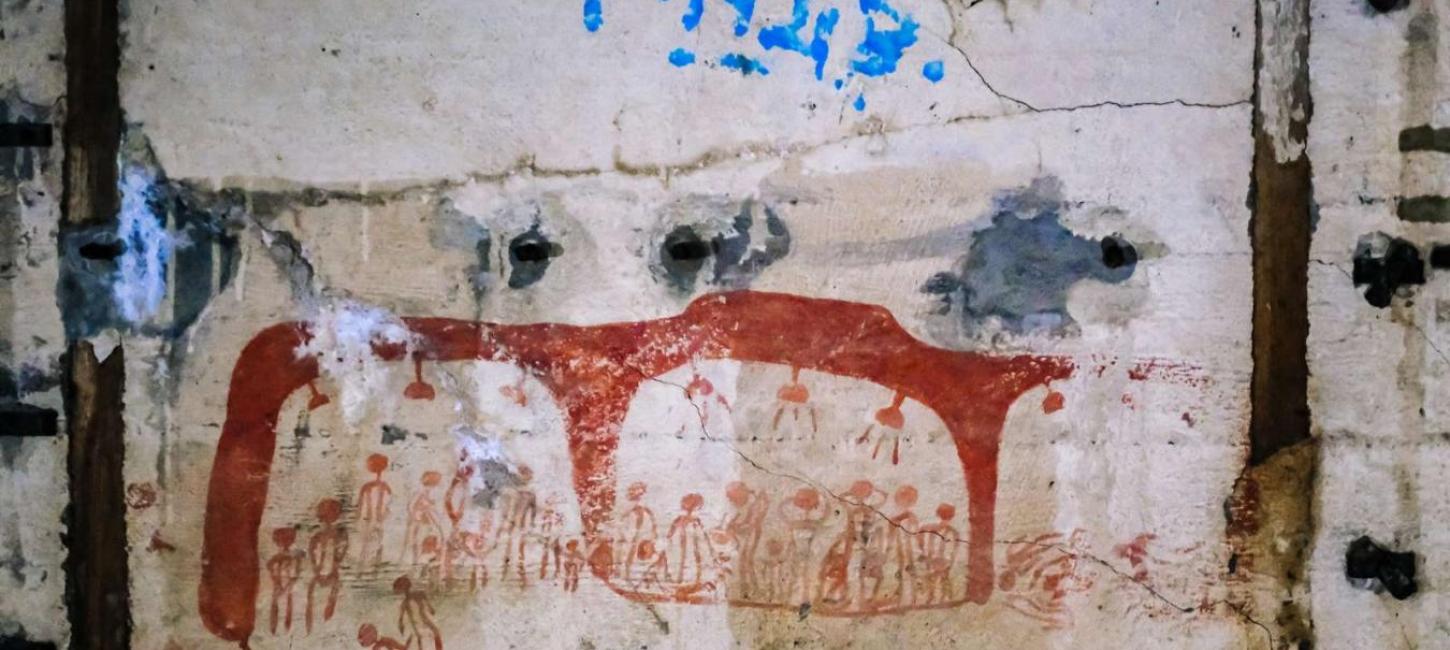
The local bunkers
Bunkerne på stranden er et synligt minde om 2. verdenskrig.
The massive amount of human resources, that the eastern front demanded during the war, made it necessary for Hitler to attempt to fortify the westward coasts as effectively as possible - even though the idea of a stationary defence network had really become obsolete at the time.
The entry to Esbjerg harbour, which was secured with the Tirpitz fortification in Blåvand and the island Fanø with its 300 bunkers, became one of the most heavily defended areas along the Danish west coast.
At Skallingen across from Esbjerg, at least 72,000 mines were deployed randomly and without a map. A map would have been useless, since this peninsula is constantly changing, due to sand migration. It wasn’t until recent years, that these mines were completely removed from the dunes.
The idea of an impenetrable fortress along the sea was thought up by Hitler himself and the Atlantic Wall was often in German propaganda called ‘an impenetrable wall of concrete, riddled with artillery and manned with loyal and elite forces’. That wasn’t exactly a correct description, since the wall consisted mostly of a series of fortified points and the elite forces were soldiers, who were either on some much needed recreation after suffering war injuries, suffer from physical defects, or too old or too young for serving at the frontlines. Some of them were prisoners of war, who were freed by enlisting in the German army.
The bunker expert recommends
There are still many bunkers along the Danish west coast. They have been ravaged by water and the passing of time, but it is still fascinating to explore them. Steen Espensen is one of the local bunker experts and he is happy to share his tips with the visitors to this area:
- If you’re going to Houvig Beach to see the concrete bunkers and other installations from WW2, I recommend stopping by Ringkøbing Museum. In the museum in Ringkøbing there is an exhibition about the bunkers and the findings discovered in Houvig since WW2 ended. Also, there is an exhibition there, which focuses on WW2 and shot down airplanes in West Jutland, he says and adds:
- In the Houvig area, there are about 50 bunkers spread out in the dunes and along the beach. I especially recommend visiting the large observation bunker on the beach. It was partly destroyed during a storm a few years ago, but there’s still access to it and in one of the rooms there are murals, which, among other things, show the persecution of the jews and concentration camps. Access to this bunker is a bit tricky, but it’s worth the trouble to venture in there.
Other interesting bunkers
There are quite a few other recommendable bunkers to see in the area. A personnel bunker, a mess hall bunker, a hospital bunker with a preserved text at the entrance saying ‘Nacht Klocke’. There’s a map of the area, which is available at the tourist information in Hvide Sande, but you should still reserve time for exploring the entire area on your own.
PLEASE NOTE: some of the bunkers in Houvig are not accessible, because they are located on private property or because they have been flooded by sand or water.